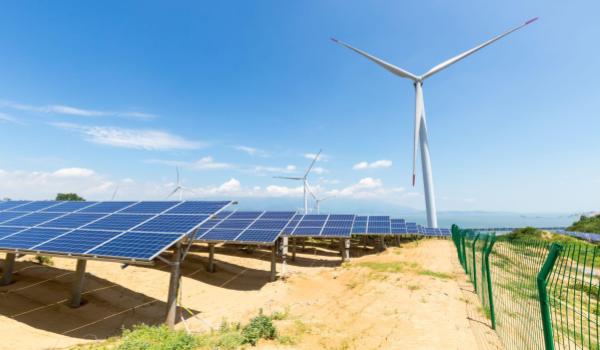Choose it or lose it, when it comes to Canadian support for low-carbon technology

Canada must quickly implement two key policies supporting low-carbon technologies, or risk losing investment to the United States’ subsidies-rich Inflation Reduction Act (IRA), say the authors of new report.
The report calls on the federal government, in its March 28 budget, to:
- create policy clarity, certainty and long-term predictability for the industries leading the net-zero transition;
- ensure carbon pricing policy is attuned to the competitive realities of Canada’s emissions-intensive and trade-exposed industry and build a robust market for carbon credits; and
- develop a broader suite of investment and production tax credits to attract investment in major emissions-reduction projects.
“Overall, what the IRA does for Canada is create a systematic structural risk to the economy, such that we would be reduced to providing primary commodities for an American manufacturing and processing base,” said Dr. Bentley Allan, PhD, a research director at the Transition Accelerator and an associate professor of political science at Johns Hopkins University.
“What we’re advocating for is a strategic response,” he said during a March 8 webinar presenting the report.
Report co-author Michael Bernstein likened Canada’s policies and incentives for supporting low-carbon technology development to offering people a coach seat on an airline.
“Then you have the U.S. [with the IRA] sending everybody to first-class right away,” said Bernstein, executive director of the Clean Prosperity climate policy organization. “When you have that choice, it doesn’t turn out to be a very difficult decision on which option you’re going to take."
The Biden administration’s IRA offers a combination of grants, expanded loan guarantees, and a series of tax credits to support clean and advanced energy development across more than 20 industrial sectors.
Although the IRA will provide about US$369 billion worth of incentives to support green energy innovation, manufacturing, and usage, a Credit Suisse report pegged its actual investment value at more than US$800 billion.
Allan and Bernstein’s working paper, Creating a Canadian Advantage: Policies to help Canada compete for low-carbon investment, says the IRA has opened up a wide gap between the revenue available from public policy sources for new low-carbon technology deployment in Canada versus the U.S.
The report was produced jointly by the Transition Accelerator, a pan-Canadian non-profit, working to identify and advance viable pathways to Canada’s 2050 climate targets and Clean Prosperity.
Allan and Bernstein analyze seven low-carbon technology cases and recommend two policy options to close the revenue gap created by the IRA.
Canada needs to systematically narrow the revenue gap by converting uncertain carbon market revenues — available under carbon pricing systems across the country — into “bankable” revenues, the report recommends. This should be done using a “contracts-for- difference” policy, as well as strategically deploying products tax credits for companies as part of an industrial policy push in high-priority clean energy sectors.
“If there ever was a time to be bold and be willing to stick one’s neck out there for net zero [economy], today’s the day and this is the budget to do it in,” Allan said.
Closing the revenue gap
According to him, Canada needs to close the revenue gap created by the IRA, since early investments in low-carbon technologies could create innovation systems and value-added supply chains in either Canada or the U.S.. “Early investments are really important, if what we want to do is capture innovation over the course of a long [energy] transition.”
For example, if Canada has the first investments in technology to directly capture carbon emissions from the air, “then other firms and sources around that technology will cluster around the first deployments," he explained. "The expertise and IP will be developed out of those experiments.”
However Canada’s 11 different provincial and territorial carbon pricing systems do not offer bankable revenue, because companies that reduce emissions and thereby acquire carbon credits have no assurance they can sell those credits at a guaranteed price in the future. Similarly, companies have no guarantee they will be able to offset their investment in lower emissions by obtaining application-based funding offered by the $8-billion federal Net Zero Accelerator Fund, the $15-billion Canada Growth Fund, the Canada Infrastructure Bank, or other funding pools.
But by providing contracts-for-difference to clean energy developers, Bernstein argued, the government would essentially offer them a guaranteed price for their carbon credits, enabling them to close the revenue gap created by the U.S. IRA incentives. Government would offer off-the-shelf contracts to companies to top up the difference, if the prevailing market price for carbon were lower than the value of the firms’ carbon credits. If the market price were higher, the companies pay the government the difference.
“With the proper design, this is a tool that will actually not cost the government anything,” Bernstein said. “Yet it will provide a strong signal and a powerful incentive across many of the clean technologies.”
The report lists technologies most suitable for the contracts-for-difference approach, including “blue” hydrogen (made from natural gas and capturing the carbon), carbon capture and storage, and direct air capture (DAC), which captures CO2 directly from ambient air,
Without the contracts-for-difference approach, the gap between Canadian and American economic incentives for low-carbon technologies could be huge.
For example, for a blue hydrogen production facility in Alberta, the incentives amount to nine cents per kilogram of hydrogen. In Texas, the incentives total $1 per kg of hydrogen.
“A firm would be leaving almost $500 million per year on the table if they were to locate that facility in Alberta versus Texas,” Bernstein noted. “But if Canada could find a way to provide that bankability on the carbon credits (such as through contracts for difference), we’d actually see a very significant bankable advantage in Canada."
For Direct Air Capture (DAC) technology, the incentives are $159 per tonne of CO2 captured versus $264/t in Texas.
Canada already is losing investment in direct air capture technology to the United States. Carbon Engineering Ltd., based in Squamish, B.C., is building its first industrial-scale DAC system in West Texas — a US$1.1-billion project aided by the IRA’s incentives.
For carbon capture and storage, the incentives in Alberta are $88 per tonne of captured carbon dioxide versus $124/t in Texas.
For large-scale solar power, the incentives total $7.95 per megawatt-hour in Alberta versus $12.54/MWh in California.
Allan pointed out that creating bankable carbon credits is especially attractive in Alberta, with its Technology Innovation and Emissions Reduction carbon pricing and emissions trading system for industrial emitters and the province’s deregulated electricity market.
“There is a real possibility that we’re going to see a big green collation grow up in Alberta, around both its really excellent wind and solar assets and its relatively open investment environment,” he said.
Need for broader net-zero industrial strategy
The report acknowledges that some clean technologies face a revenue gap created by the IRA that is so large, it cannot be closed by a contracts-for-difference approach based on carbon prices. The technologies are “green” hydrogen (made from renewable electricity sources), sustainable aviation fuel (made from biomass, for example), and battery manufacturing components for electric vehicles. For these technologies, the federal government could offer production tax credits as part of a broader industrial strategy focused on achieving net-zero carbon emissions.
The report outlines the huge gap between Canadian and American incentives for such technologies. For example:
- For green hydrogen, the total incentives in Quebec are $1.43 per kg of hydrogen produced, versus $4.02 in New York.
- For sustainable aviation fuel, the production tax credits in British Columbia are zero, compared with 58 cents per litre in California.
- For battery manufacturing, the incentives amount to $2.36 per kilowatt-hour in Ontario versus $45.68 per kWh in Tennessee.
Even with Canadian battery component manufacturers receiving substantial funding from the federal Strategic Innovation Fund, Allen admitted, there remains a big revenue gap.
“We could end up selling a lot of nickel to the United States, where it gets processed there and turned into high-value cathode-active material, and we lose out on all that value-added in the midstream of the battery supply chain,” he said.
However, the government could offer production tax credits to companies in key areas where Canada has the economic foundations and the technological expertise to compete. This would help those firms close the revenue gap created by the IRA, Allan said. Production tax credits for cathodes and select critical minerals, for instance, would cost about $5 billion over the life of those subsidies.
“The production tax credits need to be part of a broader industrial policy, a strategic approach overall to figuring out where we’re going to compete, how we’re going to compete, and building the institutions of collaboration with industry, government, Indigenous communities, labour and financial institutions across the country in order to do that in an effective way,” he said, pointing to Canada's “network failure” to compete with IRA incentives. “We don’t have information in the places we need it, in government and in industry and civil society. Increasing collaboration increases those information flows and it can actually help to drive investment in a particular way.”
According to a separate report by the Business Council of Canada released on March 2, “Canada urgently needs a coherent climate and economic policy agenda to ensure a rapid deployment of low-carbon capital and technology.”
The IRA in the U.S. is a “tectonic shift,” says the report, adding: “Without an adequate Canadian response, we risk standing by while valuable human and financial capital moves to greener pastures south of the border.”
This country has historically been “cautious Canada” compared with “ambitious America” to the south, Bernstein concluded. “The question now for us is: ‘Are we going to stay in that cautious mindset or are we going to shift to an ambitious mindset?’”
R$
Events For Leaders in
Science, Tech, Innovation, and Policy
Discuss and learn from those in the know at our virtual and in-person events.
See Upcoming Events
You have 0 free articles remaining.
Don't miss out - start your free trial today.
Start your FREE trial Already a member? Log in
By using this website, you agree to our use of cookies. We use cookies to provide you with a great experience and to help our website run effectively in accordance with our Privacy Policy and Terms of Service.





